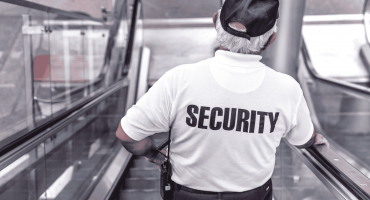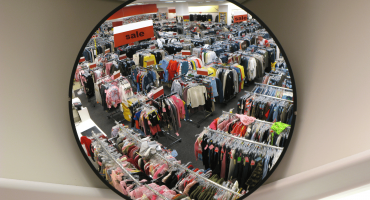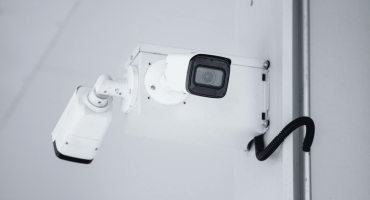In This article
Introduction
Well-established businesses, newly launched enterprises, and entrepreneurs considering a new business venture may all ask: What is the purpose of physical security safeguards? The answer is to protect all forms of a business’s assets: tangible (property, fixtures, and infrastructure), intangible (productive workforce, customer loyalty, and brand credibility), and informational (business and employee records and inventory data).
For businesses to be successful and protect their assets and activities, they need a robust system of physical security measures. These measures, such as access control systems, surveillance cameras, and alarms, play a crucial role in safeguarding the business. The more business owners understand the necessity and benefits of these measures, the more they can focus on building a profitable business.
What Are Physical Security Safeguards
Physical security safeguards have become more comprehensive and seamless because of increasing threats to all types of businesses. Guarding access to a company and thwarting theft and vandalism may first come to mind, but physical security measures must also address accidents and damage from negligence or natural disasters.
- Property evaluation – Assessing where a business is most vulnerable and the safeguards needed.
- Improved visibility – Better lighting and strategically placed video cameras.
- Physical access control – Keycards, biometric authentication, and other methods.
- Unauthorized access – AI-powered security cameras, motion detection, and object and facial recognition.
- Staff training – Security-conscious and response-ready staff.
Key Components of Physical Security Safeguards
Various physical security measures provide the structure for improved security. Business owners must also understand elements or actions that result in better security, a safe environment for customers and employees, and maximum profitability.
- Deterrence—Fencing, signage, and video cameras deter intruders and make it clear that their trespass will be noticed.
- Detection – When intruders bypass deterrence measures, detection devices such as security cameras, motion sensors, and alarms allow quick recognition and response.
- Delay – Deterrence and detection devices also delay intruders, and physical access control adds another level of delaying tactics.
- Response – All intrusion incidents require a response. Excellent internal communications, staff training, and a good relationship with local law enforcement will minimize the effects of an intrusion.
Why Are Physical Security Safeguards Important for Businesses?
When seeking the answer to the question, “What is the purpose of physical security safeguards?” Business owners must understand that a safe and secure operation also contributes to organizational stability and compliance. These are necessary to build customer loyalty, boost staff commitment, and sustain business profitability.
- Customer and staff safety—When a business has the right physical security measures, it provides a sense of safety and security for customers and employees, making them feel reassured while shopping and working.
- Data protection – Business and employee information, inventory records, and other sensitive information must be as secure as physical assets.
- Legal and regulatory compliance – Some businesses require specific physical security measures to fulfill various obligations and responsibilities.
- Minimizing insurance premiums – Businesses can qualify for lower insurance costs with a comprehensive security system.
- Reducing business disruption – Businesses prepared for most security incidents or emergencies will suffer fewer disruptions, minimizing any negative impact on productivity and profitability.
Types of Physical Security Threats
Physical security threats are a constant concern for businesses, and it’s important to be aware of the most prevalent ones. As businesses grow, add new products and services, and engage with more suppliers, threats that may have been minor can become major and require more physical security measures.
- Unauthorized intrusions—Intruders, whether shoplifting or burgling, are the most likely threats to most businesses. Businesses are safer when their first physical security measures are cameras, motion detection, and other intrusion alert systems.
- Vandalism—Acts of vandalism can be planned or spontaneous. They damage property and can also close a business for repairs.
- Natural disasters – More areas are now experiencing more natural disasters, creating vulnerabilities that business owners may have overlooked.
- Workplace violence—Intruders can perpetrate such acts by attacking customers, staff, employees, and vendors when disagreements become physical altercations.
How to Implement Physical Security Safeguards
Physical security safeguards are necessary for any business. Implementing those safeguards is often challenging because business owners don’t know how to proceed from lacking adequate security to comprehensive physical security measures.
- The first step is a thorough security risk assessment of all business assets, especially for security gaps.
- The assessment will reveal what physical security measures are needed, which may vary widely. Developing security policies will reduce any misunderstandings and help to train staff.
- Creating layers of security is another critical step when implementing physical security safeguards, including barriers, cameras, and alarms to detect and deter intruders.
- Access control systems help manage employees, customers, vendor, and visitor traffic.
- Employee training and retraining are necessary for maximum security.
Benefits of Physical Security Safeguards
Another answer to the question, ‘What is the purpose of physical security safeguards?’ is to provide business owners with many benefits that are valuable to them, their customers, and their employees, ultimately giving them peace of mind.
- Asset protection—Strong physical security measures protect all business assets, from property to inventory to sensitive data.
- Personal safety—Theft and vandalism can attack employees and customers, leading to possible liabilities and workers compensation claims.
- Reduced insurance – With the proper physical security measures, business owners may file fewer claims and pay less for insurance.
- Customer trust – Customers who feel they are shopping in a safe and secure environment are more likely to be long-term patrons.
- Operational efficiency – Reducing security incidents and dealing with them quickly is less disruptive and maximizes staff productivity and smooth operations.
Examples of Effective Physical Security Safeguards
Many types of businesses are discovering the effectiveness of physical security safeguards in thwarting intruders and employee theft and in maximizing the protection of property, inventory, and operational efficiency.
- In an office setting – Keycards, visitor logs, and surveillance cameras secure staff and visitor entries while monitoring systems detect unauthorized behavior.
- In a warehouse setting – External areas may require perimeter fencing, gates, and even security guards. On-premise CCTV cameras, monitoring devices, and alarms safeguard property, equipment, and inventory.
- In a retail setting – Deterring shoplifters, employee theft, and fraud are the primary purposes of physical safety measures in retail stores. Adequate lighting, strategically placed security cameras, and employee training all contribute to a safer environment.
- In a healthcare setting – Access control is a critical function of physical security measures in hospitals, clinics, and physicians’ offices. Patient data and access to it, as well as well-developed emergency protocols, are also necessary.
Challenges in Physical Security Implementation
As beneficial as physical security measures can be for all businesses, implementing them presents various challenges. Recognizing these challenges during a security risk assessment and before investing in physical security safeguards will help business owners spend their security budget wisely.
- Cost—By realistically balancing costs against security needs, business owners will not have to compromise on securing their assets.
- Technology complexity – The complexity of the many tech security solutions can stymie the implementation of physical security measures. Proper planning will help identify the best solutions and integrate them with existing systems.
- Staff commitment – Training is the key to developing employees focused on security and safety.
- New threats – From organized retail crime to cybercrime, business owners must be aware of new threats, educate themselves, and evolve security protocols and practices.
The Future of Physical Security Safeguards
Because the security vulnerabilities of all businesses won’t disappear soon, technologies, protocols, and best practices will continue to evolve to address exposure to intrusion, theft, fraud, and many other threats.
- Artificial intelligence (AI) and machine learning (ML) will enhance the capabilities of security cameras, monitoring, and alarm systems to close security gaps.
- The Internet of Things (IoT) will provide additional technological advantages, such as integrated systems that allow users to access security data from anywhere and smart sensors and devices that automatically detect and alert users.
- Automation and robotics will expand physical security measures to improve surveillance and allow staff to focus on high-value work.
- Physical and digital security systems will be seamlessly integrated to upgrade threat detection, leading to more strategic security decisions with advanced data analysis.
Conclusion
All business owners should ask, “What is the purpose of physical security safeguards?” The answer is simple: to protect both tangible and intangible assets. Tools like AI-powered cameras, access control systems, and employee training help detect threats, protect property, build trust, and boost profits. DTiQ has a team of loss prevention experts who can work with you to identify and mitigate security risks. Contact us to learn more.
Frequently Asked Questions
Q: What is the purpose of security safeguards in the business environment?
A: Businesses can’t operate efficiently or profitably without a full complement of physical security measures to protect property from unauthorized intrusions, monitor customer and employee behavior, and create a business environment for success.
Q: How does physical access control improve security?
A: Excellent security starts with controlling employee, customer, vendor, and visitor access to a business’s premises. Many threats to businesses occur because unauthorized individuals penetrate physical security measures. Having the systems in place to identify suspicious behavior at a business’s perimeter and entry points minimizes security incidents on the property.
Q: What are the key physical security measures every business should implement?
A: Surveillance, in the form of keypads and biometrics to control access and AI-powered cameras and monitoring systems for facial recognition and motion detection, is the foundation of better security. Alarm and alert systems are also key to thwarting intruders and protecting business occupants from fire, natural disasters, and other emergencies. Advanced data analysis provides insights into traffic patterns and customer and employee behavior. Business owners can be proactive rather than reactive to security threats.
Q: How can a security risk assessment enhance protection strategies?
A: Significant time and money can be wasted if business owners don’t first assess the security risks to all parts of their operations. It’s virtually impossible to invest security dollars wisely and apply those to a business’s security gaps without thoroughly evaluating all security needs. A security risk assessment is the foundation of a business security plan that addresses common and unique security vulnerabilities.






























